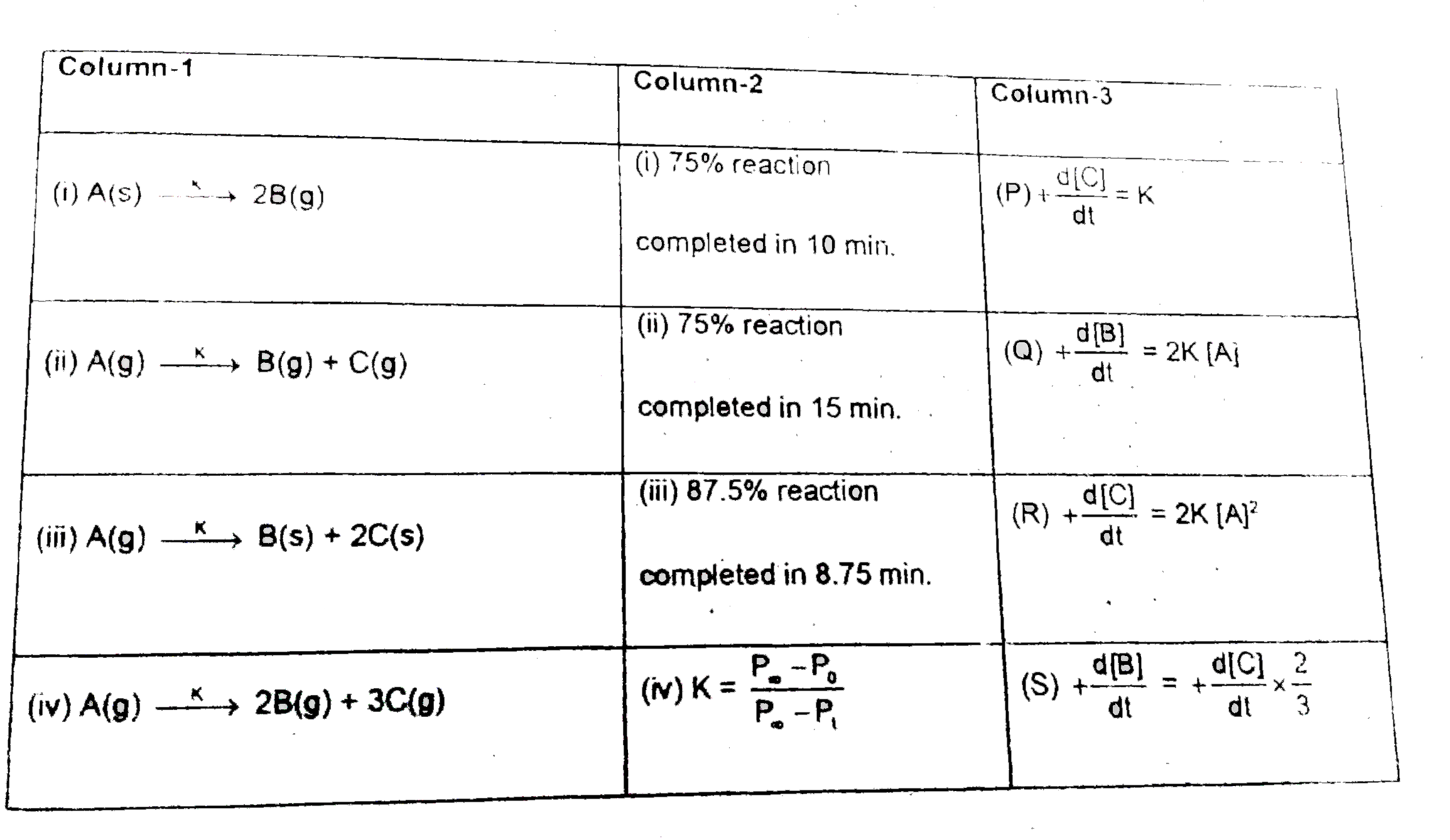The order of reaction is determined by of the reaction
Step-by-Step Solution
1. Understanding the Statement: The statement claims that the order of a reaction is determined by the stoichiometry of the reaction.
2. Clarifying the Order of Reaction: The order of a reaction is defined as the sum of the powers of the concentration terms in the rate law expression. It is determined experimentally, not solely based on the stoichiometric coefficients of the reactants.
3. Example 1 - Reaction of H₂ and Cl₂: Consider the reaction:
H2+Cl2→2HCl
For this reaction, the stoichiometry suggests a 1:1 ratio of H₂ to Cl₂. However, the experimental data shows that the order of this reaction is 0. This means the rate law can be expressed as:
Rate=k(H2)0(Cl2)0=k
Here, the order is 0, indicating that the reaction rate does not depend on the concentration of the reactants.
4. Example 2 - Reaction of H₂ and I₂: Now consider the reaction:
H2+I2→2HI
In this case, the stoichiometry is also 1:1. However, the experimental rate law shows:
Rate=k(H2)1(I2)1
Here, the order of the reaction is 2 (1 from H₂ and 1 from I₂), which corresponds directly to the stoichiometric coefficients.
5. Conclusion: The statement that the order of reaction is determined by stoichiometry is false in general. It is only true for simple or elementary reactions. For complex reactions, the order must be determined experimentally.
H2+Cl2→2HCl
For this reaction, the stoichiometry suggests a 1:1 ratio of H₂ to Cl₂. However, the experimental data shows that the order of this reaction is 0. This means the rate law can be expressed as:
Rate=k(H2)0(Cl2)0=k
Here, the order is 0, indicating that the reaction rate does not depend on the concentration of the reactants.
H2+I2→2HI
In this case, the stoichiometry is also 1:1. However, the experimental rate law shows:
Rate=k(H2)1(I2)1
Here, the order of the reaction is 2 (1 from H₂ and 1 from I₂), which corresponds directly to the stoichiometric coefficients.
Topper's Solved these Questions
- CHEMICAL KINETICSBook:ICSEChapter:CHEMICAL KINETICSExercise:EXERCISE (PART- I (OBJECTIVE QUESRTIONS) D. MATCH THE FOLLOWING )
Explore 3 Videos
- CHEMICAL KINETICSBook:ICSEChapter:CHEMICAL KINETICSExercise:EXERCISE (PART- II (DESCRIPTIVE QUESRTIONS) A. VERY SHORT ANSWER QUESTIONS (WITH ANSWERS ))
Explore 132 Videos
- CHEMICAL KINETICSBook:ICSEChapter:CHEMICAL KINETICSExercise:EXERCISE (PART- I (OBJECTIVE QUESRTIONS)B.COMPLE THE FOLLOWING STATEMENTS BY SELECTING THE CORRECT ALTERNATIVE FROM THE CHOICES GIVEN )
Explore 105 Videos
- BIOMOLECULESBook:ICSEChapter:BIOMOLECULESExercise:ISC EXAMINATION QUSTIONS (PART-I)(DESCRIPTIVE QUESTIONS)
Explore 21 Videos
- CHEMISTRY IN EVERYDAY LIFEBook:ICSEChapter:CHEMISTRY IN EVERYDAY LIFEExercise:EXERCISE (PART - II (DESCRIPTIVE QUESTIONS) (LONG ANSWER QUESTIONS))
Explore 19 Videos
Similar Questions
Knowledge Check
The order of reaction is decided by
AtemperatureBmechanism of reaction as well as relative concentration of reactantsCmolecularityDpressure.
The order of following reaction is :

View SolutionDefine 'order of a reaction'.
View SolutionHow the order of a reaction can be determined by integral equation method ?
View SolutionCarbylamine reaction is given by secondary amines–––––––––––––––––––.
View SolutionThe rate of reaction is determined by slow step reaction. The step is called
View SolutionThere is no relation between the stoichiometry of the reaction and order of the reaction, order is always experimently calculated. Monitoring of the progress of the reaction can be done by pressure measurement (P0,Pt & P∞ are total pressure of reaction mixture at time, t=0, t=t & t=∞) .All following reactions in Column-1 have half life 5 minutes.

Select incorrect combination for Ist order reaction :
View SolutionThe half-life of a reaction is halved as the initial concentration of the reaction is doubled. The order of the reaction is
View Solution

